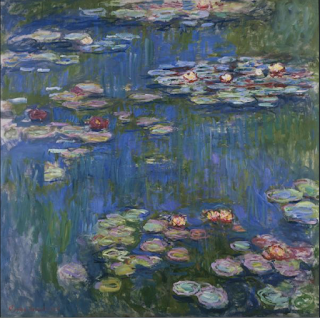First off - Ok so I found out last night that yesterday was "National Crayola Day". It dawned on me, even if you don't have any fancy shmancy art supplies, you can still recreate a master work using good old fashioned crayons! So let's all just bear that in mind, shall we? After all, the greatest works in art have often been created using the crappiest or least respected art supplies. I bet you could even make a rudimentary paint using eg whites and food colouring. Hmm...I'll have to google that...later.
ANYWAY...
Alright, these are the works we learned yesterday.
Can you name the artist for each? Give yourself 1 point for each artist if you can name them.
Can you name the title of the painting? Give yourself another point for each painting you can name correctly.
Possible points per painting: 2, for a grande total of 6 points.
Ready. Set. go.
Today we will add a new artist: Vincent Van Gogh
(He is one of my personal favourites because the story of his life is so poignant.)
"The Starry Night"
A closer look at the brush strokes in
"Starry Night".
"The Bedroom"
A closer look at the brush work in
"The Bedroom".
"L'Eglise a Auver-Sur-oise"
A closer look at the brush strokes in
"L'Eglise a Auver-Sur-Oise"
** One of the interesting things that has been said about this painting is that Van Gogh painted it while he was in hospital at Auver-Sur-Oise. Before Vincent became a painter, he studied to become a Priest. But for what ever reason had difficulty connecting with God in that environment. Some have said that the reason he painted the Church at Auver-Sur-Oise with no visible doors had something to do with his experiences as a Priest. Always searching for God, but never quite connecting Him.
I hope he did in the end.
Read more about Vincent Van Gogh
here and also
here.
So today we have added to our Flash Card list, the following pieces. Please say aloud, the name of the artist as you look at each image. If you can, try to pronounce the title of the piece:
Edgar Degas, "Blue Dancers"
Vincent Van Gogh, "The Bedroom"
Claude Monet, "Water Lillies"
Pierre August Renoir, "Water Lillies"
Vincent Van Gogh, "The Starry Night"
Edgar Degas, "The Absinthe Drinker"
Claude Monet, "Bains a La Grenouiller"
Pronounced: Ban ah La GRON-nooee-AIR
Pierre August Renoir, "La Grenouiller"
See prononciation above.
Well done!
Maybe if you have paint supplies you may wish to attempt to reproduce for make your own Impressionist painting using many tiny little brush strokes.
If you have no painting supplies then take some time to sketch something in your home or something you can see out of your window.

















































